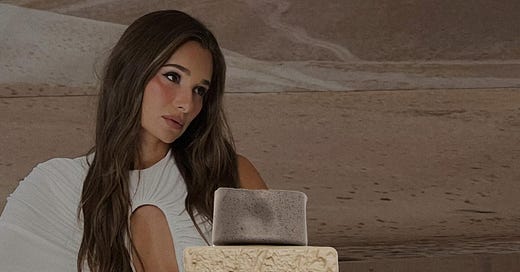When it comes to brand licensing and marketing, influencers and relatable individuals are proving to be more powerful with the masses than celebrities. Nothing illustrates this shift better than the recent presidential election campaigns.
Politics aside, one of the biggest debates after the results settled in was the stark difference in strategies between the candidates. Kamala Harris relied on a traditional (and increasingly outdated) marketing plan, allegedly paying millions to celebrities like Beyoncé and Jennifer Lopez to endorse her. Even Taylor Swift’s “Childless Cat Lady” post didn’t quite land.
In contrast, Trump’s campaign leaned into unscripted relatability: appearing on popular podcasts, showing up at McDonald’s, and embracing moments that felt real. These interactions went viral organically, without big budgets or celebrity endorsements.
This is not about politics—it’s about marketing. The past few years have brought a palpable shift in consumer behavior, and we’ve now passed the tipping point: real people are now more influential than celebrities. And this is exactly why they’re called “influencers.”
The Rise of Relatable Branding
This shift came to mind when I saw influencer Danielle Bernstein (aka We Wore What) launch her first fragrance with Parlux today. Fragrance is a category heavily dependent on branding, personality, and licensing. It’s also a lucrative space traditionally dominated by celebrities.
If you aren’t familiar with Danielle Bernstein, where have you been? With 3.3M Instagram followers and a clothing and accessories collection that launches new products almost weekly, Danielle started as a fashion influencer and has evolved into the face of her brand. Today, she’s more of a designer and entrepreneur than an influencer in the traditional sense.
When I saw her We Wore What fragrance, I instantly thought of Kylie Jenner’s recent fragrance launch, Cosmic. Kylie, once the queen of social media branding, shares a similar demographic with Danielle (women ages 18-35). But the launches couldn’t feel more different.
A Tale of Two Fragrances
Take a look at the bottles. Danielle’s fragrance is perfectly on brand. Anyone who follows her knows her style—she shares her entire journey, from the materials she uses in her home to her favorite colors and textures. Her fragrance bottle doesn’t just look beautiful; it feels like an extension of her lifestyle and aesthetic. This level of visibility makes her branding seamless. Her audience knows what colors, materials, and styles she gravitates toward, so when you see the We Wore What fragrance bottle, it feels like an extension of her aesthetic. It stands out while fitting perfectly within the world she’s built.


Now compare that to Kylie’s Cosmic (yes, spelled with a “C,” not a “K”). The bottle is lovely, but it’s not anchored to her brand or style. Kylie’s recent product launches—between her alcohol brand, Sprinter, and her new clothing line, Khy—all feel disconnected.
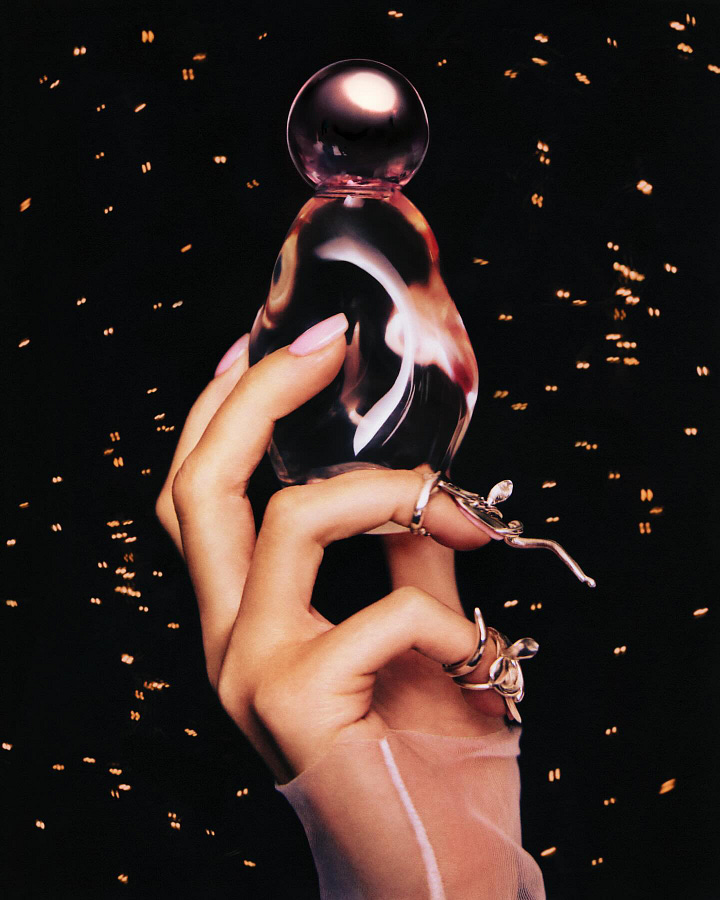
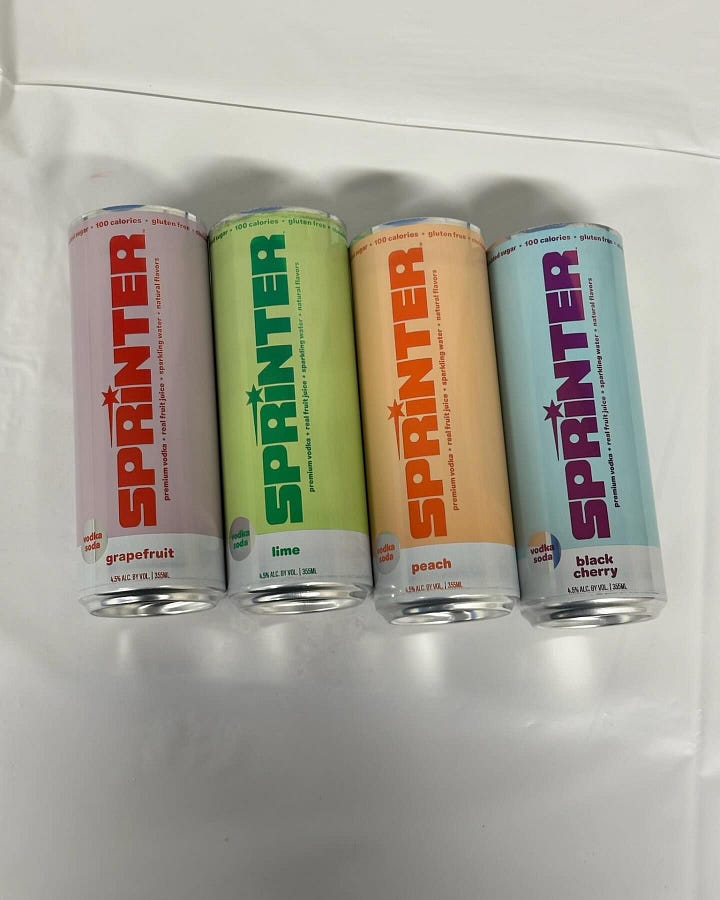
Consumers notice these things now. We have access to founders and behind-the-scenes stories, and we can tell the difference between a true passion project and a money grab. Danielle’s fragrance feels intentional and connected. Kylie’s feels like another checkbox on a to-do list.
Behind-the-Scenes Storylines: Real vs. Polished
Another striking difference between these two fragrance launches is the behind-the-scenes storytelling. Danielle Bernstein gives her followers a front-row seat to her journey. She’s in the cab on her way to meet with the fragrance team, sharing the process, her excitement, and what it feels like to be in the moment. These raw, relatable snippets allow her audience to experience the creative process alongside her, creating a sense of connection and investment in the product.
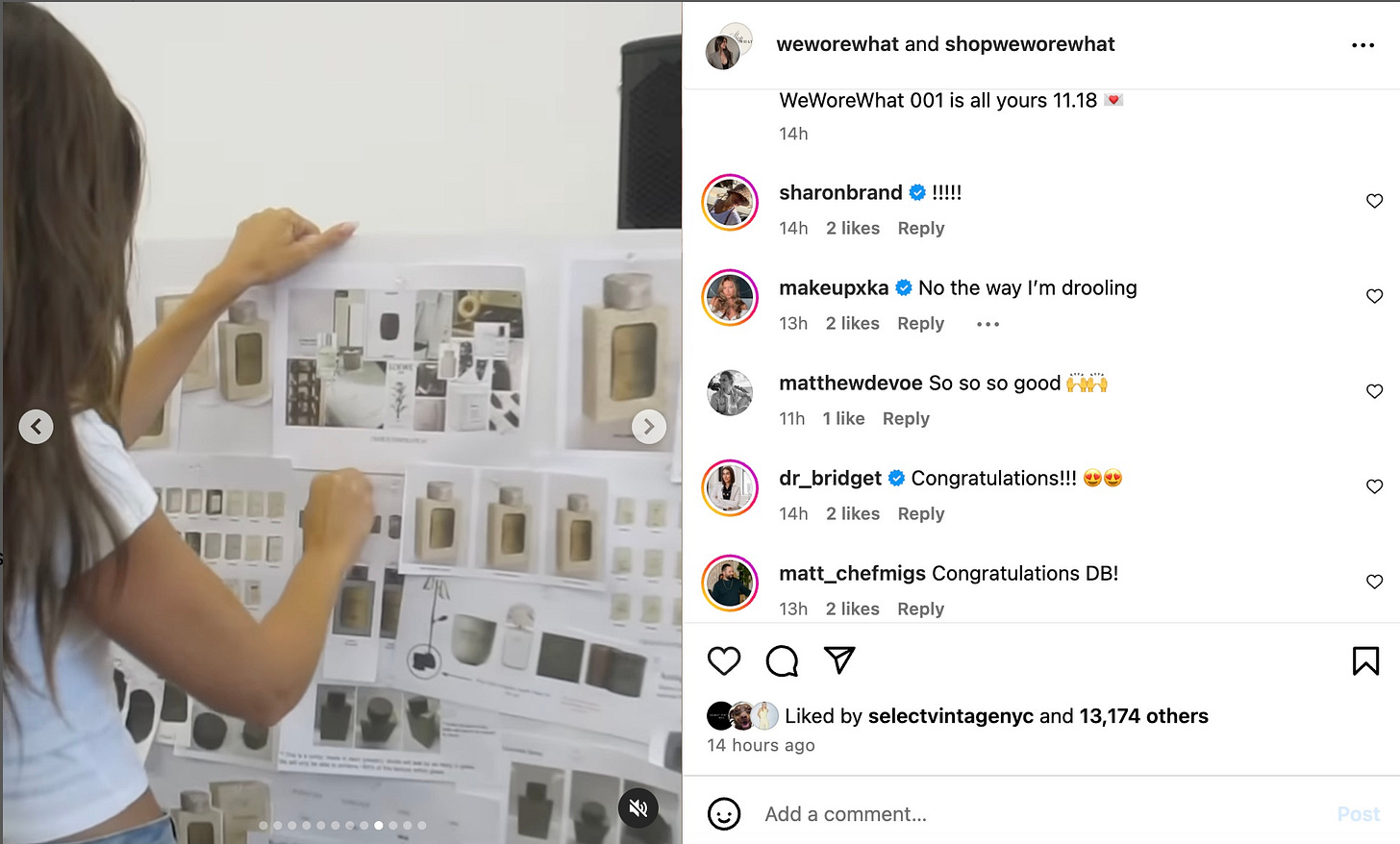
Kylie Jenner’s approach, on the other hand, feels more removed. For Cosmic, she shared a beautifully produced video featuring an executive at her fragrance partner. The executive describes how Kylie and her friends were "obsessed" with the fragrance, recounting a meeting at their office. While polished and professional, the story lacks the personal connection and immediacy that Danielle’s behind-the-scenes content delivers.
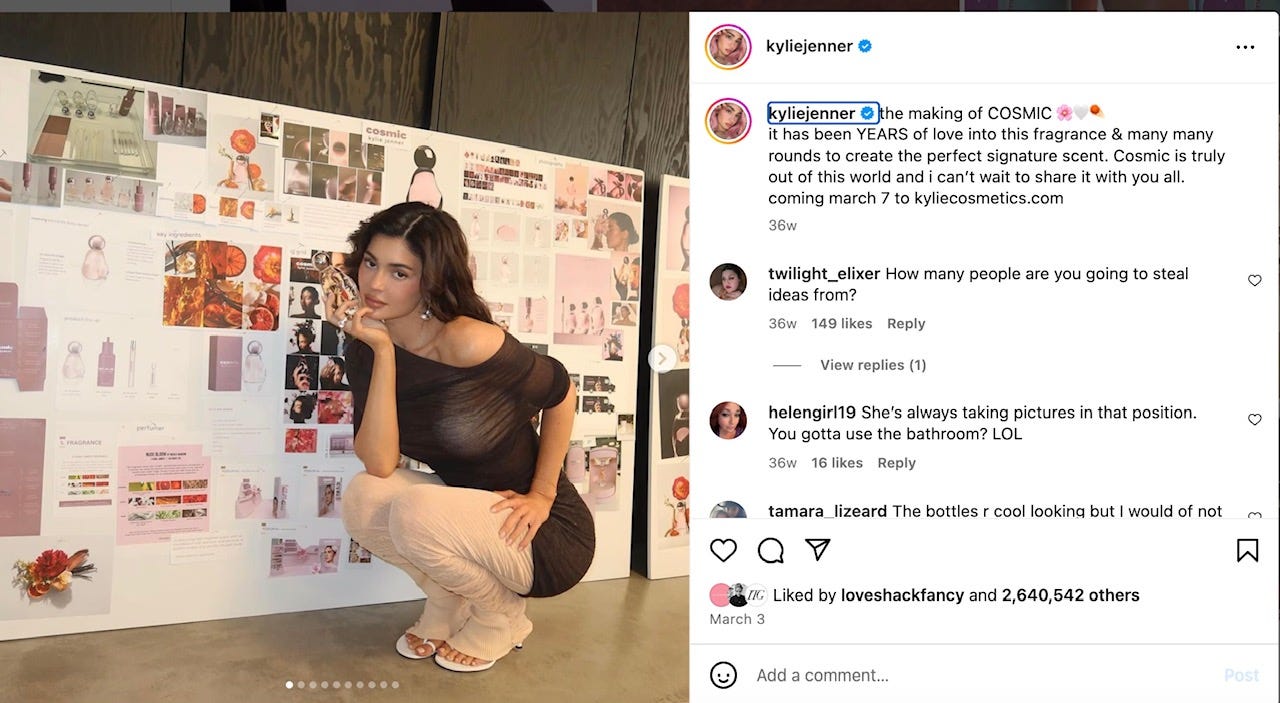
This contrast underscores why influencers like Danielle Bernstein are resonating more deeply with consumers. Social media has shifted the balance of power by allowing audiences to follow the creative journey in real time. Authenticity and shared experiences now trump (no pun intended) glossy campaigns that feel scripted or distant.
Kylie Wrote the Playbook—So What Happened?
To be fair, Kylie deserves credit for writing the playbook for turning social media status into a brand. She was once Snapchat royalty and built the wildly successful Kylie Cosmetics empire with her iconic lip kits. Many beauty brands and influencers owe their success to her brand-building savvy.
But something has shifted. Whether Kylie is over it—or simply almost over—it’s clear that the formula that once worked so flawlessly is now struggling to connect.
Why This Shift Matters
The move from celebrity-driven brands to influencer-driven brands isn’t just about trends. It’s about what consumers want: authenticity, relatability, and brands that feel like a reflection of the people behind them.
Sure, celebrities still hold sway in certain demographics and global markets. But if brands want to stay relevant in a world where consumers crave connection, they need to take notes from influencers like Danielle Bernstein, whose passion and personality translate seamlessly into their products.
The age of influencers has arrived—and they’re proving to be more influential than the celebrities who came before them.


